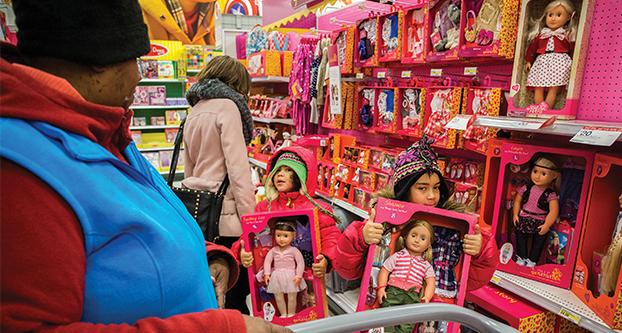Earlier this month, the retailer Target announced that it would no longer be labeling toys, bedding and entertainment by gender. Hurray! This is a major win for gender-neutral marketing.
Target’s decision to remove the gender labels in these departments is a positive action. It will help disintegrate modern and harmful gender stereotypes and create a welcoming environment for children to choose their own entertainment.
Gender-neutral toy sections are a move in the right direction. Without labeling items for “boys” or “girls,” children will not have to face one of the many stigmas of gender roles so early.
Is it so terrible if a young boy wishes to play with a doll? Or is it so awful if a young girl desires to build model cars? What is a society saying to its members when it labels one toy definitively into one group? Is it telling men that they cannot be nurturing? Or is it telling women that they cannot build things?
When children grow up ingrained with the idea that certain activities are set apart for only one gender, they are hindered.
By breaking down some of the first societal barriers that children encounter, Target is helping construct a more inclusive generation that will no doubt make great strides in ensuring equal opportunity for all.
There is still more to be done than removing the labels, though. Taking a walk through the toy aisle, the remnants of the blue and pink camps remain. While the word “boys” is removed, the blue, black and steel colors emanate masculinity. It is enough to make even a 24-year-old woman feel displaced between the Bionicle figurines and Erector sets.
The previously-labeled “girls” aisle is no different. Pink dolls and tea sets are strewn on the shelves, and an Elsa handbag will not stop staring at you, no matter which direction you turn. It is an unsettling feeling for anyone walking down the aisle.
A more reasonable way to separate toys, rather than by gender or by designated color, would be to organize them by the age of the children they are intended for.
Shopping for a toy suitable for a toddler is much different than choosing a toy for a preteen. Choking hazards and age requirements play a huge role in choosing a toy for a child. Categorizing the section by age would facilitate a safe environment for both children and adults to find appropriate toys.
There would be less confusion, and it would save parents the time of searching each toy individually for an age requirement.
Not surprisingly, individuals have spoken out saying that without the labels, children and even adults will be confused as to what toys to purchase.
Luckily, if confused individuals were to accidentally walk 20 feet forward, they would find themselves conveniently located in the book aisle. This is the aisle in which individuals have been shopping genderlessly and enlightened for years, proving that the choice of entertainment is not dependent upon associated gender.
Another criticism of Target’s decision is the misunderstanding that Target will also remove the gendered clothing labels. Target is not removing the signage from the clothing department. The only departments affected by these new changes are the toys, bedding and entertainment sections, where Target has deemed gender labels unnecessary.
Target is not asking individuals to give up traditional gender roles, rather, the company is choosing not to contribute to the natural constriction that stereotypes enable.
A major retailer like Target backing away from gender stereotypes sets an example for other major retailers. Who will be next? I’m looking at you, Walmart.





Manivone Sayasone • Aug 23, 2015 at 11:07 pm
Hey
Megan, I really like the thesis of your article and I agree with a lot
of what you had to say in regards to how gender stereotypes can stunt
children’s growth as individuals. The passage about stereotypes
indicating that boys cannot nurture and girls cannot build is my
absolute favorite. Personally, I can relate to this whole gender
neutral business simply because I grew up as a little girl who always
envied the toys boys get to play with. Thankfully, my parents bought me
toys that I liked during my childhood. And you know what happened as a
result? You guessed it, nothing. I still identify as female (both sex
and gender). It turns out I just like adventurous, action-orientated
toys (which explains why I love video games so much). So of course, I
also that feel a person’s desire for a product should not be limited to
what his or her gender happens to be. I understand that parents have
ideas on how they want their children to turn out but at the end of the
day, it’s the children playing with the toys. Over time, children will
come across various toys as well as ways to explore their interest as
they grow.